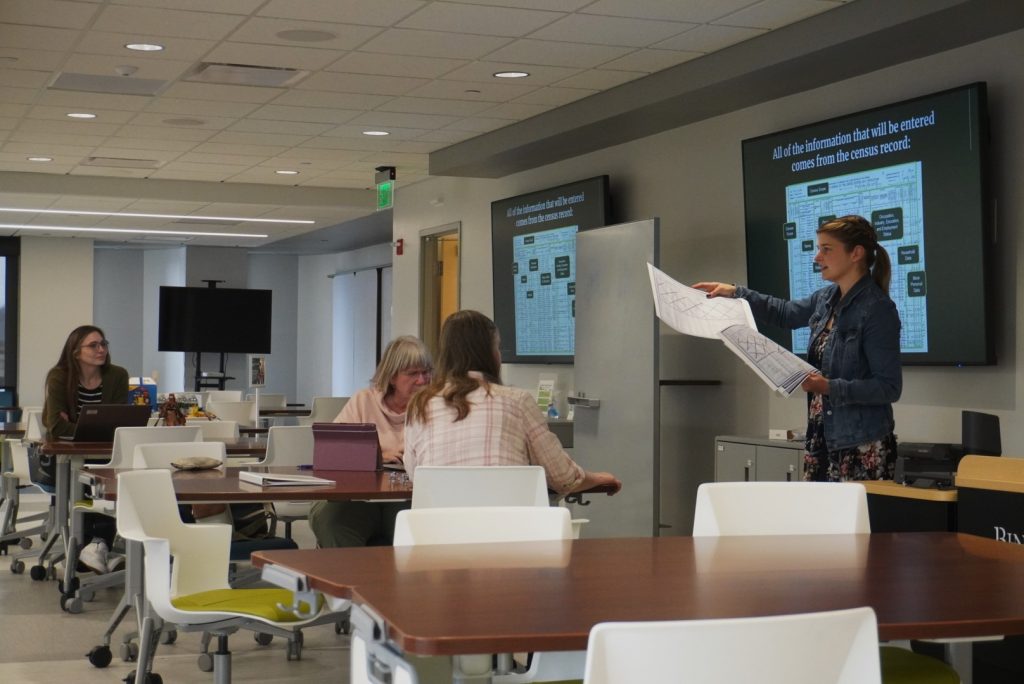The University Libraries are inviting volunteers to participate in a digital project to make the city’s history more accessible to students and residents.
The Libraries partnered with HistoryForge, a project founded by Bob Kibbee, the former map and geospatial librarian at Cornell University. Started by the History Center in Ithaca, New York, the digital project “brings local history to life by mapping historical census data, making it more accessible for researchers, students, and community members,” according to a spokesperson from the Libraries.
The project was launched on Feb. 12 in Glenn G. Bartle Library’s Digital Scholarship Center through a collaboration with representatives from the Libraries, the Departments of Asian and Asian American Studies and History, and Binghamton Codes!, a program created in 2020 to teach programming basics to students. Grants were secured, and volunteers were found to help transcribe old census records. Eve Snyder Ph.D. ‘20, the project’s director, discussed its impact in Tompkins County and other partner communities in New York, Pennsylvania, Ohio and Louisiana.
Mary Tuttle, the HistoryForge coordinator and the subject librarian for History, Middle Eastern and Ancient Mediterranean Studies, said the project “fosters a deeper connection between Binghamton University and the local community.”
“For residents who want to explore local history, they can use our map, ‘The Forge,’ to explore their neighborhoods as they looked more than a hundred years ago; seeing who lived in each house and viewing any historical photographs that have been added for that address,” Tuttle wrote.
“For students, transcribing census records is a great way to get introduced to working with primary sources and not only seeing how they can be used in a digital history project, but contributing to such a project, firsthand, which also makes it a valuable tool for faculty who can use this as a unique and locally-grounded opportunity for students to learn in their courses,” she continued.
After the project’s launch, transcription events have been held twice a month at either the Digital Scholarship Center or downtown at the Phelps Mansion Museum. During these events, interested volunteers are invited to come and “learn about the project and receive training to start entering census records into HistoryForge.” Once trained, volunteers can continue working with other transcribers or transcribe independently.
Tuttle said that since the project is still in its early stages, its focus remains on “transcribing the 1910 census for Binghamton” before expanding into neighboring areas, including Lestershire — now known as Johnson City — Endicott, Union and Vestal.
Transcription events have been scheduled for the rest of the semester, with plans for summer events still in the works. The next session will be held on April 17 from 6 p.m. to 8 p.m. at the Phelps Mansion Museum.
“Areas of Binghamton have seen drastic transformations as a result of urban renewal and other development over the years, so adding historical photographs of buildings, combined with historical map overlays, offers a powerful visualization of Binghamton’s history,” Tuttle wrote. ”Long-term, we aim to complete the other census years available (1850-1950) and expand to include all of Broome County, as well.”



